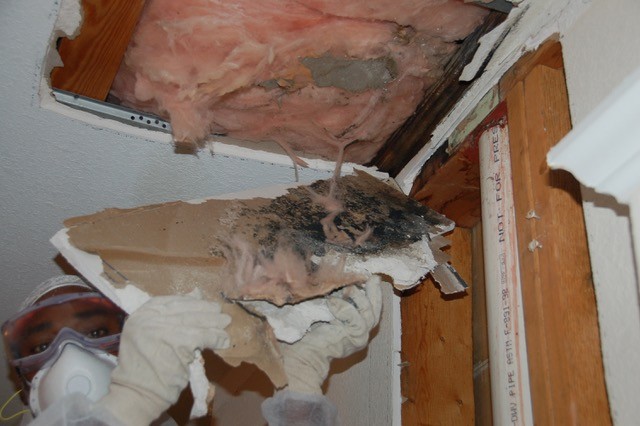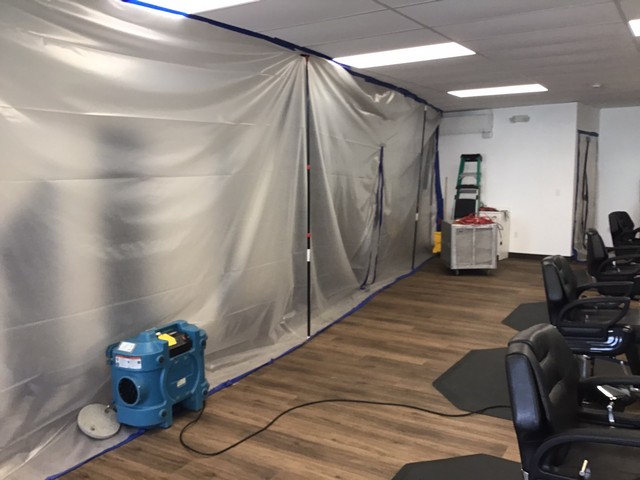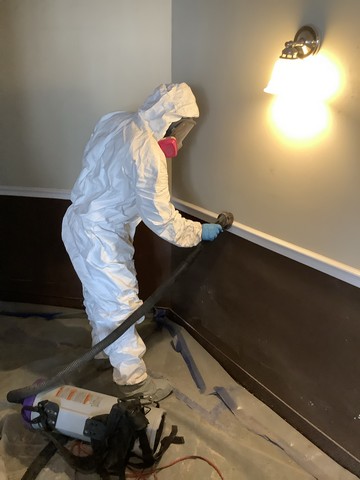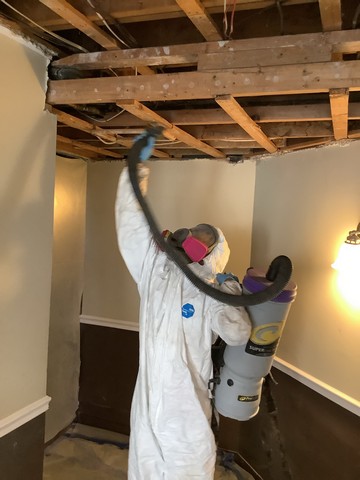Do It Yourself Mold Removal Challenges!

Do It Yourself Mold Removal Challenges!
DIY mold removal attempts are highly inefficient and can make the situation worse.
The only instance in which these attempts to remove mold have any potential to work is when one recognizes the first sign of mold growth and somehow manages to prevent it from further developing. Such an instance is incredibly rare as it is difficult to time mold removal just right.
In addition, fully eliminating the source of moisture that promotes mold growth is even more difficult. In the end, just about every DIY mold removal attempt proves incomplete. Such solutions are temporary in nature.
For instance, common household cleaning agents and disinfectants are nowhere near as strong enough to eliminate mold spores. This is also true of bleach. Such cleaners are much too weak to kill those pesky mold spores. Rather, they simply hinder mold spore development for a short period of time.
Mold will inevitably reappear again unless it is attacked with a proven cleaning solution administered by an experienced mold removal professional.
The other concern, of course, is the health of the occupants of the building. Some people have mild reactions to mold, these are mold allergies. Unfortunately, there is a segment of our population, about 25%, that are mold sensitized, meaning they have adverse reactions to any exposure to mold and will eventually develop a condition known as Chronic Inflammatory Response Syndrome (CIRS).
According to Dr. Ritchie Shoemaker, CIRS is:
“an acute and chronic, systemic inflammatory response syndrome acquired following exposure to the interior environment of a water-damaged building with resident toxigenic organisms, including, but not limited to fungi, bacteria, actinomycetes and mycobacteria as well as inflammagens such as endotoxins, beta glucans, hemolysins, proteinases, mannans, c-type lectins and possibly spirocyclic drimanes, plus volatile organic compounds.“
Symptoms of CIRS include: Fatigue, Weakness, Aches, Muscle Cramps, Unusual Pain, Ice Pick Pain, Headache, Light Sensitivity, Red Eyes, Blurred Vision, Tearing, Sinus Problems, Cough, Shortness of Breath, Abdominal Pain, Diarrhea, Joint Pain, Morning Stiffness, Memory Issues, Focus/Concentration Issues, Word Recollection Issues, Decreased Learning of New Knowledge, Confusion, Disorientation, Skin Sensitivity, Mood Swings, Appetite Swings, Sweats (especially night sweats), Temperature Regulation or Dysregulation Problems, Excessive Thirst, Increased Urination, Static Shocks, Numbness, Tingling, Vertigo, Metallic Taste, and Tremors.
For this reason, we always advise calling a professional to assess your mold problem.
Puritan Restoration are experts at mold removal and proudly serve residential and business owners in Norwood, Newton, Framingham, Cambridge, Needham, Brookline MA and surrounding areas.
The purpose of this article is to explain why you should always contact a professional before attempting to remove mold from your home or business yourself. If you suspect that you have mold, please don’t hesitate to call, 617-527-2229. Peace of mind is just a phone call away!
Key Facts About Mold!

Key Facts About Mold!
Molds are very common in buildings and homes throughout our service area. They’ll grow anywhere indoors, wherever there is moisture.
Common indoor molds include Cladosporium, Penicillium, Aspergillus, and Alternaria. However, with floodwater that brings other contaminants into buildings several more types of fungi can grow – including mushrooms!
Mold spores naturally occur in outdoor environments. They’re a necessary part of Nature’s cycle of life. Their job in nature is to break down and “digest” organic material and return resources to the soil so new life can begin. However, when mold enters your home or work space it can be deadly.
Mold spores enter your house from the outside through:
- open doorways
- windows
- heating, ventilation, and air conditioning (HVAC) systems with outdoor air intakes
Spores in the air and ground outside also travel indoors via people and animals. Clothing, shoes, bags, and pets are convenient vehicles carrying the spores indoors.
When mold spores drop on places where there is excessive moisture, such as where leaks may have occurred in roofs, pipes, walls, or where there has been basement or crawl space flooding, they grow. But mold especially likes cellulose-containing materials like:
- paper and paper products,
- cardboard,
- ceiling tiles
- wood and wood products
Many building materials, like drywall and OSB, actually provide nutrients that encourage mold to grow when they’re wet.
Other materials like dust, paints, wallpaper, insulation materials, drywall, carpet, fabric, and upholstery, commonly support mold growth when they’re wet also.
The NUMBER 1 Reason Cleaning Mold Damage Is NOT a Do It Yourself Job!

The NUMBER 1 Reason Cleaning Mold Damage Is NOT a Do It Yourself Job!
The Institute of Medicine (IOM) found there was sufficient evidence to link indoor exposure to mold with upper respiratory tract symptoms, like chronic sinus infections, cough, and wheeze in otherwise healthy people; with asthma symptoms in people with asthma; and with hypersensitivity pneumonitis in individuals susceptible to that immune-mediated condition. And more research comes out every year indicating how even a small exposure can cause big problems.
With the stakes that high, you really don’t want to risk putting yourself, your family or employees at risk!
Since health is the number one reason you should be cautious, always consult a professional.
At Puritan Restoration, all of our technicians are trained to protect themselves – with safety equipment such as respirator air masks, tyvek suits, and protective gloves. And, they’re trained to protect you and your property too.
Unless you have full personal protective gear including a respirator, as well as knowledge and experience, don’t try to remove mold yourself! Cleaning mold damage can make you sick!
Here’s why you want Puritan Restoration’s Comprehensive Mold Remediation Services:
- First, we create containment and apply HEPA air filtration. This prevents cross-contamination to other areas of the home or office.
- Next, we creating negative air so that the affected area is vented to the outdoors where mold belongs.
- Then we HEPA vacuum and clean the affected area to remove surface growth.
- And, we remove all cellulose containing materials – like drywall and carpet – that the mold penetrated.
- Then we apply anti-microbial solution to clean and protect the area and prevent future growth.
- After that, we HEPA vacuum every surface again.
- As a last step, we may encapsulate the area – when necessary.
We protect your home or business from contamination while we remove the mold for you safely!
Got Mold Questions?

Got Mold Questions?


Recent Comments